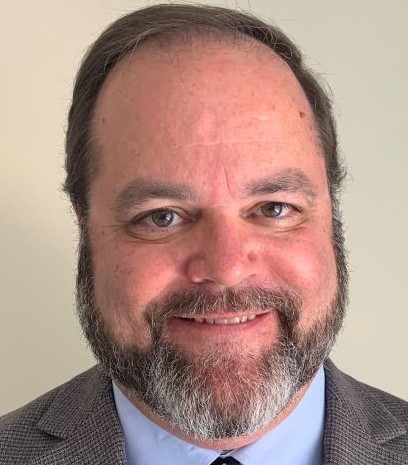Stepping foot into a successful partnership to support your viral vector therapy through commercialization
Cell & Gene Therapy Insights 2021; 7(11), 1706–1710
10.18609/cgti.2021.225
Charlotte Barker, Editor, Cell and Gene Therapy Insights, speaks to Minh Hong, Head of Commercial, Viral Gene Therapy, Merck, and Marc Gaal, Director, Program Management at the Life Sciences Business Sector, Merck
With Merck recently opening a new gene therapy manufacturing facility in Carlsbad, California, we caught up with two of Merck’s top experts in viral vector manufacturing to find out more about some of the challenges of viral vector production and how Merck helps customers bring their product safely through to commercialization. Watch the Video Interview below or Read the Interview further down the page.
Q What are the key ways in which the quality component of viral vector manufacturing has advanced in recent times?
MG: We’ve seen a real paradigm shift in recent years from customers saying ‘please get me material as fast as possible’ to asking us to help them bring their product to commercialization. And having established a proven track record of successful regulatory inspections has afforded us with the first-hand knowledge needed for the evolving landscape that is cGMP.
Q Customers come to you at different stages and with different requirements – how do you ensure that you meet their needs?
MH: I think the industry has a flurry of wonderful activities and great ideas at the research and development stage. However, the challenge contract drug manufacturers face is translating those good ideas into process development and achieving the desired manufacturing outcomes in a robust and reproducible way.
We firmly believe that a robust manufacturing process requires process development insight at every stage of the product lifecycle. For example, to normalize any process that comes into our facility, we have a manufacturing gap assessment service that we provide to our clients. As part of this service, we perform a paper assessment of the customer’s process (and potentially a small-scale feasibility run) to build a clear roadmap of what it will take to move the client’s process into GMP manufacturing.
We assess the process unit operations, performance, critical quality attributes, analytics, and supply chain considerations through the lens of process development and quality. This results in tailored recommendations for development and manufacturing and helps us to determine the appropriate timelines.
The manufacturing gap assessment arms us with a comprehensive understanding of our customer’s needs and helps the customer to develop a more detailed understanding of how we’ll move their process into manufacturing. This service level sets the customer’s process to our capabilities, as well as the customer’s expectations for the manufacturing journey ahead.
Q Once you understand the customer’s needs, how do you support them through the manufacturing process?
MG: Once the manufacturing gap assessment is completed, as Minh already detailed, we’ll assign a Project Manager to partner with the customer and the Cross-functional Project Team. The Project Manager then helps to guide the team in refining the target Program Timeline. By employing a combination of traditional Project Management practices and a structured Stage Gate process, we help our customers not only achieve pre-determined definitions of success at each stage of drug development, but also de-risk their manufacturing process. The result is fewer GMP setbacks and decreased release of lot turnaround times.
Q How exactly has your organization chosen to invest in cell and gene therapy manufacturing?
MG: Our new large-scale gene therapy manufacturing facility is comprised of suites that perform buffer media and preparation, cell expansion, midstream, downstream, and fill/finish. All of the manufacturing areas are Grade-C clean rooms, following ISO 7 standards. They are equipped with the latest in adaptable and scalable, state-of-the-art, single-use equipment, providing a safe, closed system for production.
We also have a suite of support laboratories that provides our clients with reliable testing results from process development through manufacturing. These labs perform multiple functions including qualification of raw materials, biochemistry, microbiology, and environmental monitoring.
Q What lead your organization to determine that this was the right time to invest in a new gene therapy manufacturing facility?
MH: Why was this the right time? I think it’s clear that manufacturing capacity is at an all-time high, but it’s not only capacity customers are seeking. We’ve been through the initial ‘honeymoon’ phase for gene therapies. All our customers remain time-sensitive, but there is definitely a drive to reduce cost-of-goods for manufacturing and increase yield to serve larger patient populations. Upping capacity is great – but building a state-of-the-art facility and implementing enabling technologies to reduce timelines, scale up to decrease costs, and improve product safety and robustness is something that stands out.
Q How do you think the new facility helps to better support your customers?
MH: Our smart facility design, including templated processes and a robust supply chain of our bioreactors and biomanufacturing technologies, can serve many large-volume bioreactor customers with line-of-sight into reducing manufacturing costs and timelines, while increasing yields and quality. That is a huge benefit for our customers.
MG: The new facility allows us to scale up in suspension cultures to produce the three most commonly used viral vectors – lentivirus, adeno-associated virus, and adenovirus. It also allows us to use connected, automated, single-use technologies that reduce the need for lengthy changeover practices, thus maximizing batch throughput.
Affiliations
Minh Hong
Head of Commercial, Viral Gene Therapy, Merck
Marc Gaal
Director, Program Management at the Life Sciences Business Sector, Merck
Authorship & Conflict of Interest
Contributions: All named authors take responsibility for the integrity of the work as a whole, and have given their approval for this version to be published.
Acknowledgements: None.
Disclosure and potential conflicts of interest: The authors declare that they have no conflicts of interest.
Funding declaration: The authors received no financial support for the research, authorship and/or publication of this article.
Article & copyright information
Copyright: Published by Cell and Gene Therapy Insights under Creative Commons License Deed CC BY NC ND 4.0 which allows anyone to copy, distribute, and transmit the article provided it is properly attributed in the manner specified below. No commercial use without permission.
Attribution: Copyright © 2021 The Life Sciences Business Sector of Merck KGaA, Darmstadt, Germany. Published by Cell and Gene Therapy Insights under Creative Commons License Deed CC BY NC ND 4.0.
Article source: Invited.
Interview conducted: Nov 5 2021; Publication date: Jan 12 2022.



